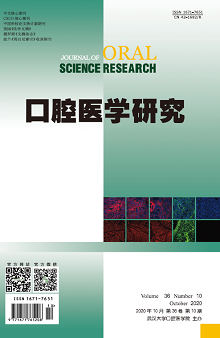|
|
Prognostic Factors of Mucoepidermoid Carcinoma of Salivary Glands: a SEER Database-based Study
ZHANG Shuguang, WANG Yulong, XU Wenguang, YIN Xiteng, HAN Wei, ZOU Huihui
2020, 36(10):
915-920.
DOI: 10.13701/j.cnki.kqyxyj.2020.10.007
Objective: To analyze and screen prognostic risk factors of salivary gland MEC. Methods: The clinicopathological data and follow-up data of salivary gland MEC patients were downloaded from the SEER (surveillance, epidemiology, and end results) database in the United States between 2004 and 2015. Patients were randomly divided into the training and validation cohorts. The MEC patients in the domestic database were selected as an independent external verification group. The univariate analysis was initially employed to screen the clinicopathological factors that affected the prognosis of MEC patients. The multivariate analysis was used to obtain independent factors affecting the prognosis of patients. The nomogram was constructed and the distinguishing ability and consistency of the model were tested. Results: A total of 2209 patients with MEC of salivary glands were included in this study. Patients were assigned as training set (n=1657), and the rest were selected as SEER validation set (n=552). An external validation was performed by a set of independent 234 MEC patients from Nanjing Stomatological Hospital and Fu Dan Hospital in China .The univariate analysis showed that age, gender, clinical stage, T stage, N stage, M stage, and histological grade neck dissection were important clinicopathological factors affecting the prognosis of patients. Multivariate analysis showed that age, T stage, N stage, M stage, histological grade, and neck dissection were independent factors affecting the prognosis of MEC patients of salivary glands. An individualized nomogram was successfully constructed to predict the prognosis of patients with MEC of salivary glands, and the discriminability test showed that the C-index was 0.794 (95%CI 0.744-0.844), indicating that the model reached a good discriminability. The consistency test showed that the predicted survival rate by the nomogram was consistent with the actual survival rate. Conclusion: Age, gender, clinical staging, T staging, N staging, M staging, histological grading, and neck dissection were the prognostic factors of MEC patients in salivary glands. The constructed nomogram could effectively predict the prognosis of patients with salivary gland MEC.
References |
Related Articles |
Metrics
|

